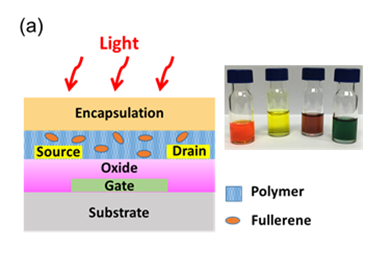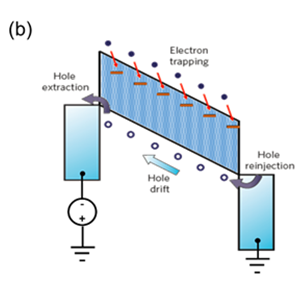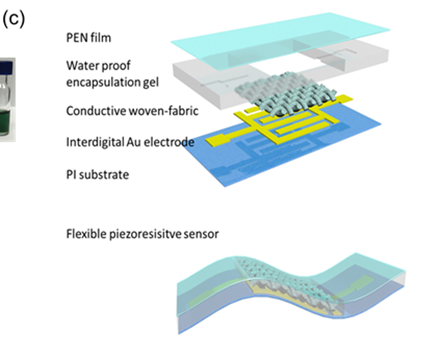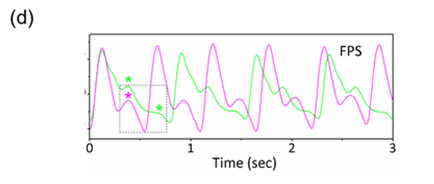Prof. ZHAO Ni, Department of Electronic Engineering
Recently, wearable electronic devices such as fitness watches and wristbands have emerged as a new platform for health monitoring. However, very few of such products have the capability to measure blood pressure (BP) due to the technical complexity in extracting reliable BP values. Major mobile electronics companies such as Samsung and Apple have included BP as a major physiological parameter that can be measured by their upcoming smart watch models. Nevertheless, no products have yet promised high measurement accuracy. Prof. ZHAO Ni in the Department of Electronic Engineering is working to address this issue by developing sensors that are extremely flexible and able to form comfortable and seamless contact with the skin, thereby minimizing measurement errors caused by motion artefacts. Furthermore, by combining optical and mechanical probing (enabled by the phototransistor and piezoresistive sensor, respectively), a multimodal BP monitoring system can be developed, which will significantly enhance the measurement accuracy. The low power consumption of the sensors is also attractive for mobile applications.
Composite Inks
The heart of the technique is a composite active layer containing two or more components. These components have different functionalities but can be dissolved in a common solvent, which is used as "ink" for printing (Figure 1a). When printed on a substrate, the components will self-assemble during the drying process of the ink and form a composite solid film. By changing the relative weight ratio of the components in the ink and by controlling their self-assembly process, the properties of the composite layer can be controlled.
Utilizing this principle, ZHAO's team has developed an ultrasensitive phototransistor based on a two-component bulk heterojunction semiconductor. In this semiconductor, micron-sized fullerene domains (component A) are isolated and embedded in a polymer matrix (component B), as shown in Figure 1a. When an electron-hole pair is generated upon light excitation, the electron will be trapped in the fullerene domain while the hole will transport rapidly in the polymer matrix and circulate through an external circuit many times until eventually recombining with the trapped electron (Figure 1b), thus providing gain (i.e., self-amplification). Such device exhibits a responsivity (electrical output (in Amperes) per optical input (in Watts)) of up to 5×105 AW-1, which is 5 orders higher than that of commercially available silicon photodiodes. The driving voltage of the device is below 3V and the thickness of the device is merely a few microns (much thinner than a human hair).
The team has also exploited the composite approach to develop flexible piezoresistive devices. (Piezoresistive effect is a change in the electric resistance of a material when force/pressure is applied.) In a typical device (Figure 1c), a fabric matrix is decorated with conductive particles and brought into contact with metal electrodes. Sensitivity tuning of the device is enabled by controlling the loading of the conductive particles, while the mechanical properties of the device can be varied by changing the morphology and material composition of the fabric matrix. Through material
optimization, the team was able to demonstrate high sensitivity, long duration and ultra-flexible piezoresistive devices that can pick up subtle physiological signal variations from epidermal pressure pulses (Figure 1d). The sensor power consumption is as low as 3 nW.
Biomedical applications
The composite devices can be made into electrical, optical and mechanical sensors to pick up various physiological signals from the human body. To leverage the solution-processibility of the devices, ZHAO's team has developed a set of printing methods to fabricate the sensors directly on flexible and stretchable substrates. Such sensors form an intimate and conformal contact with human skin (Figure 2), thus minimizing the motion artifacts induced during a person's daily activities. Meanwhile, the high sensitivity of the sensors reduces the power consumption of the measurement systems.
The applications of the flexible sensors range from the monitoring of heart rate, heart rate variability and blood oxygen saturation to neuroimaging. In conjunction with Prof. ZHANG Yuan-Ting, ZHAO's team has demonstrated continuous beat-to-beat cuffless blood pressure (BP) measurement using a wearable sensor set that integrates a flexible piezoresistive sensor with epidermal electrocardiogram sensors (Figure 2d). This approach provides a promising solution to realize real-time and home-based BP monitoring, which will be extremely valuable in the diagnosis and prognosis of cardiovascular diseases. The team is now pursuing further improvement in the accuracy of their BP monitoring system by developing a sensor network that combines optical and mechanical sensing modalities.
|
|

|
Figure 1a: Schematic of a two-component bulk heterojunction phototransistor
|

|
Figure 1b: Gain mechanism of the two-component phototransistor
|

|
Figure 1c: Schematic of the piezoresistive sensor
|

|
Figure 1d: Epidermal pulse signals before (green) and after (magenta) exercise of a human subject
|

|
Figure 2 photographs of flexible (a) pressure sensor, (b) optical sensor, and (c) electrocardiogram (ECG) sensor; (d) Beat-to-beat measurement of blood pressure by the wearable sensor set
|
|
|
